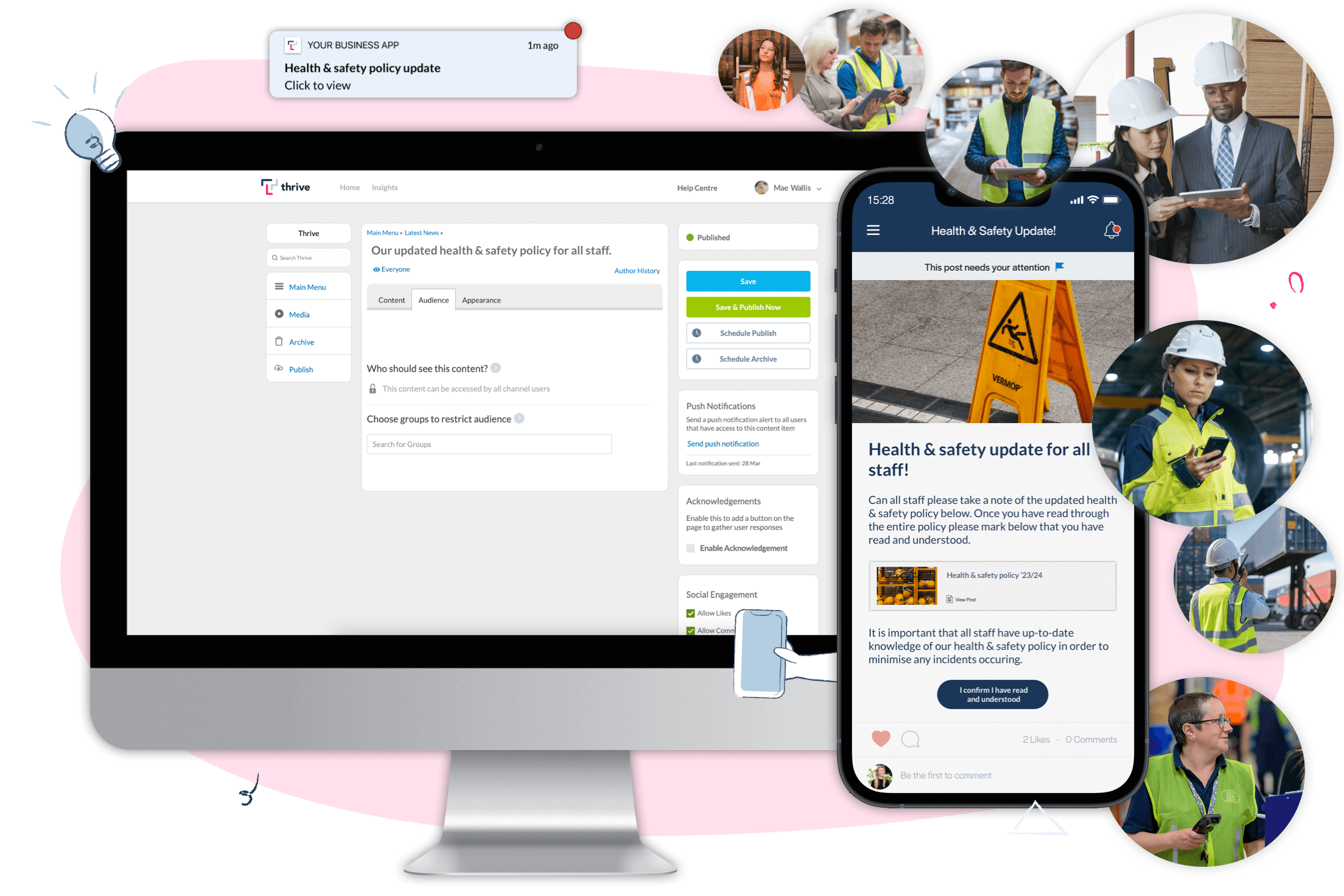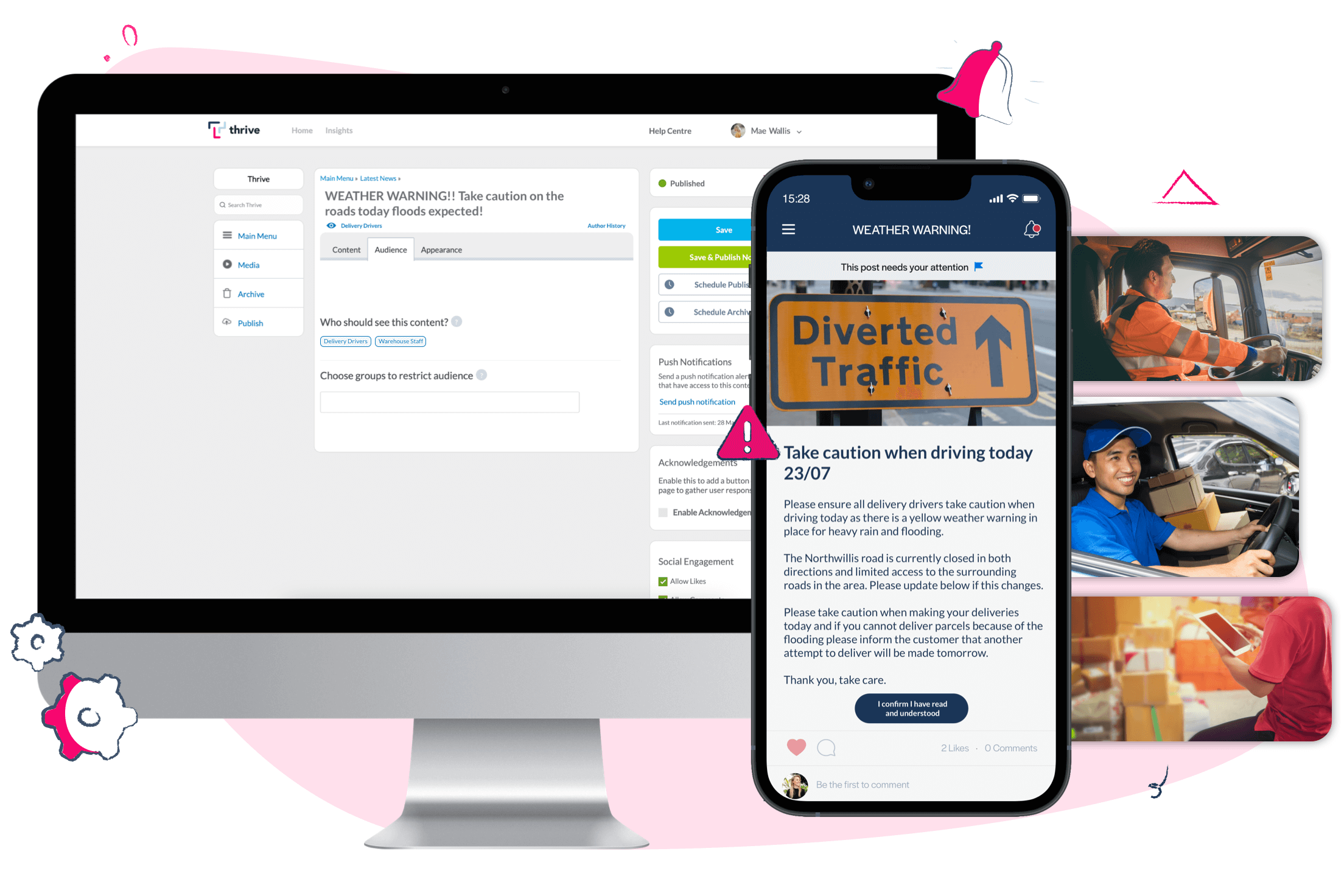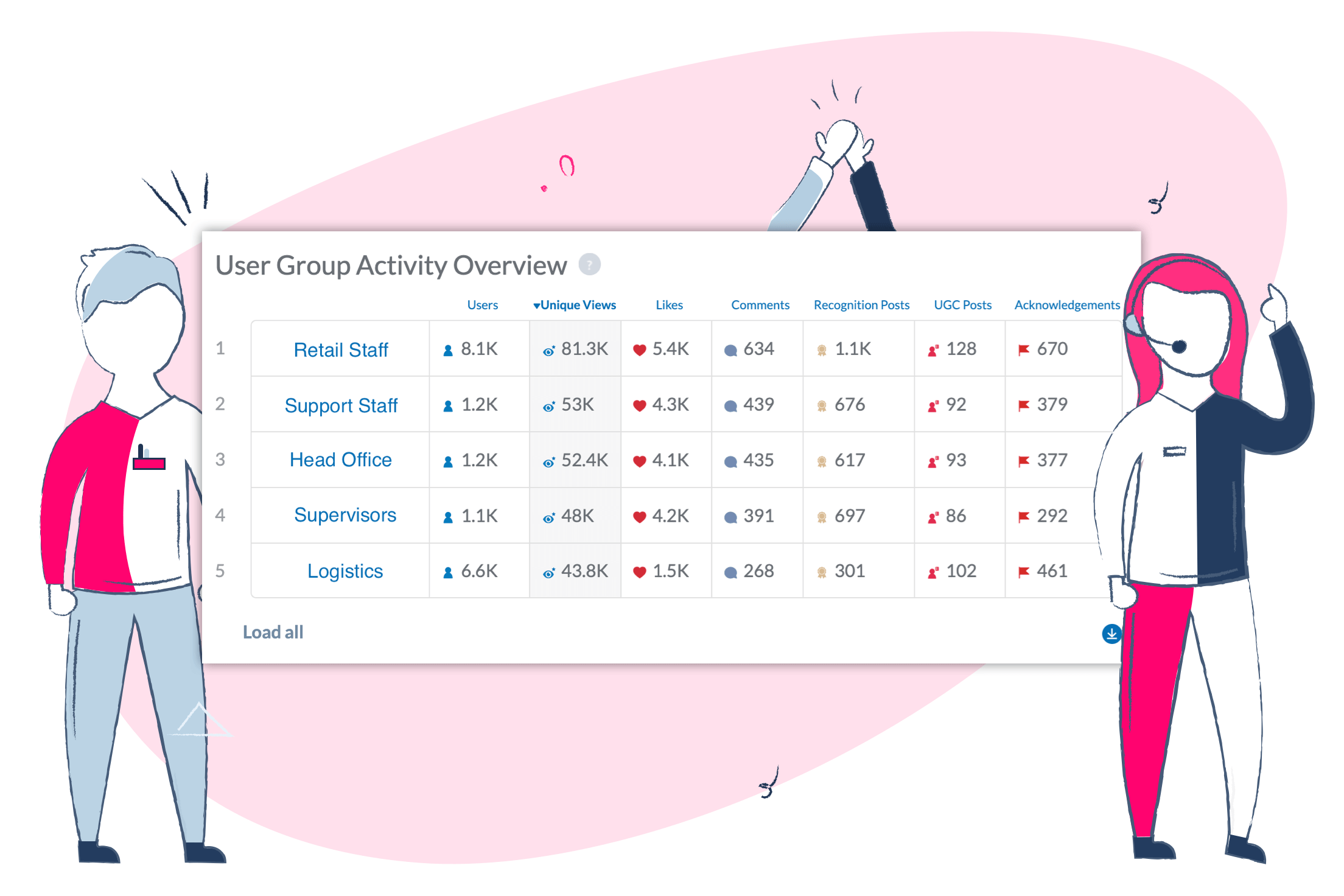The strategy of sending “all hands” communications can certainly have its advantages. Connecting with employees about important topics is essential. However, using content and audience segmentation, intelligently, has big impacts on the perception, and engagement of your employee app content, especially if you’re in a larger organisation.
Segmentation helps with the ‘signal to noise’ ratio for employees. In today's world, people have so much digital information sent to them every day, so much so, that they immediately tune out if they think that something isn’t relevant to them, or that their time is being wasted. This is why relevant content and segmentation is important to ensure high levels of active usage and engagement in your employee app.
If employees think that your employee app content isn't relevant or useful to them, and especially if they’re receiving push notifications about it – they’re much more likely to give up and either turn off push notifications for the app altogether, or even uninstall the app.
What Is Employee List Segmentation?
Employee list segmentation is the practice of dividing employees into groups. These groups are based on characteristics such as department, office location, job title or special interests.
The goal is to tailor your messages and content to specific groups to make sure each communication is relevant to them and more impactful, making the content feel unique and worth reading.

What Are the Pros and Cons of Segmenting Your Employee Lists?
Dividing your employee base into distinct groups can be an effective way to enhance involvement and customise your communication activities. However, there are some potential downsides to consider when segmenting lists. It is important to evaluate the advantages and disadvantages before making a decision.
Pros:
- Personalisation can be achieved by categorising employees into different distribution lists. This way, messages can be tailored to each group, making them more relevant and helpful to the people in it.
- Targeted messages are more likely to be read and absorbed. This leads to higher engagement rates. Engagement rates are a key performance indicator (KPI) for many organisations. It is important, regardless of the sector or scale of the business.
- Targeting specific employees with relevant messages can spur specific actions. This increases the return on investment for communication efforts.
Cons:
- Segmenting employee distribution lists can take a lot of time. This is true for both setting up the initial lists and creating unique messages for each list. This is especially true for companies with many employees that require different types of segments.
- Resource management: Depending on the size of your workforce, and the number of segments, additional resources may be needed. These include dedicated communication staff to manage the various communications you share.
- Risk of over-segmentation: Too many lists can cause confusion. Having too many distinct communication channels can lead to fragmentation among employees. For example, if your strategy includes using in-app messaging for certain segments and emails or other channels for other segments.
When Should You Use All Hands Communications?
“All hands” communications are an effective way to share important news or updates with your entire workforce at once. However, they should be used sparingly, as too many of these broader communications can lead to information overload, and disengagement.
Use all hands communications when:
- There is important information to share. Examples include: a company-wide policy change, a safety alert, or another announcement that affects everyone.
- You want to recognise and celebrate the achievements of the entire workforce.
- You want to communicate a major organisational change or strategic goal.
When Should You Use Segmented Communications?
Segmented communications can be beneficial when sharing information that is more relevant and impactful to certain groups of employees. Segmented communications can be delivered through many channels. These include email, employee apps such as the Thrive employee app, company intranets, and social media.
Use segmented communications when:
- You want to communicate information that is specific to certain departments or teams, such as a new process or procedure.
- Target employees with specific interests. These interests could include wellness initiatives or volunteer opportunities. Make sure these employees have self-identified their interests.
- You want to recognise the achievements of individual employees or teams.

How Should You Segment Your Lists?
When it comes to segmenting your employee distribution lists, there is no one-size-fits-all approach. The segmentation strategy for your organisation will be determined by your goals, workforce size and communication channels. These should all be taken into consideration when deciding which strategy is best.
Some companies may decide to create segments by department or discipline, while others may create segments based on geography. This enables HR and communications professionals to send specific messages to employees. These messages relate to news and considerations that will have a direct impact on their work.
The segments themselves are entirely up to the needs of your business. But with that said, there are still a few best practices to keep in mind:
- Start with the basics. Begin by segmenting your lists based on basic characteristics. Examples include department, location, and job title (managers, directors, operations, sales, HR, site floor, delivery drivers and so on).
- Analyse employee's engagement in existing content to determine your ' employee interests' segmentation strategy. The level of engagement among departments can vary. If certain departments have higher engagement, it may be beneficial to create a separate segment for those employees. This depends on the nature of the business.
Consider the Communication Channel
When segmenting your lists, consider the communication channels you plan to use. For an employee app like Thrive.App you may want to segment your lists according to which employees have downloaded the app. Then, segment within that channel.
Review & Refine
Regularly review and refine your segmentation strategy to ensure that it remains effective and relevant. Remember, it's not about having the most segments. It's about having a strategic number of segments to maximise engagement in your content. Remember to ask for feedback from employees as they are the best people to tell you what content they're interested in. You can also use the Thrive employee app Insights to analyse what content is getting the most engagement.

What if Some Employees Fall into Multiple Segments?
It's common for employees to fall into multiple segments. Consider an employee, for example who work in the sales department, in a satellite office or even work remotely. They may also have an interest in wellness programs.
It's important to prioritise which segment to communicate with when dealing with such cases. This will help to avoid overwhelming the employee with numerous distinct messages.
One approach is to create a master segment which includes all employees. Additionally, more specific segments can be created as required during the year.
A different strategy is to use dynamic segments. This approach requires more bandwidth to establish and manage. The segments can be adjusted according to changes in employee data.
For example, you might be able to create a segment for employees interested in wellness programs that automatically includes employees who attend wellness events or sign up for wellness-related communications.
It is important to communicate with employees in a clear and open way. Explain to them how they will be divided and what type of communication they should expect. This is important no matter which approach you decide to take. This can help to build trust and increase engagement with your communication efforts.

Creating Smaller Lists—to Drive a Bigger Impact
Employee list segmentation can improve the effectiveness of your communication strategy. It ensures that every employee receives the right information in a personalised and actionable way. This makes communication more engaging and impactful.
Segmenting your lists has many benefits. Although there may be certain challenges and compromises, these are outweighed by the advantages.
Take time to understand your employees, their interests and communication preferences. This will help you create messages tailored to each individual. These messages will resonate with everyone and contribute to business and employee app success.
Are you a Thrive.App client? If so, you can learn more about segmenting your lists and content. Click here to visit our Help Centre.
.svg)
